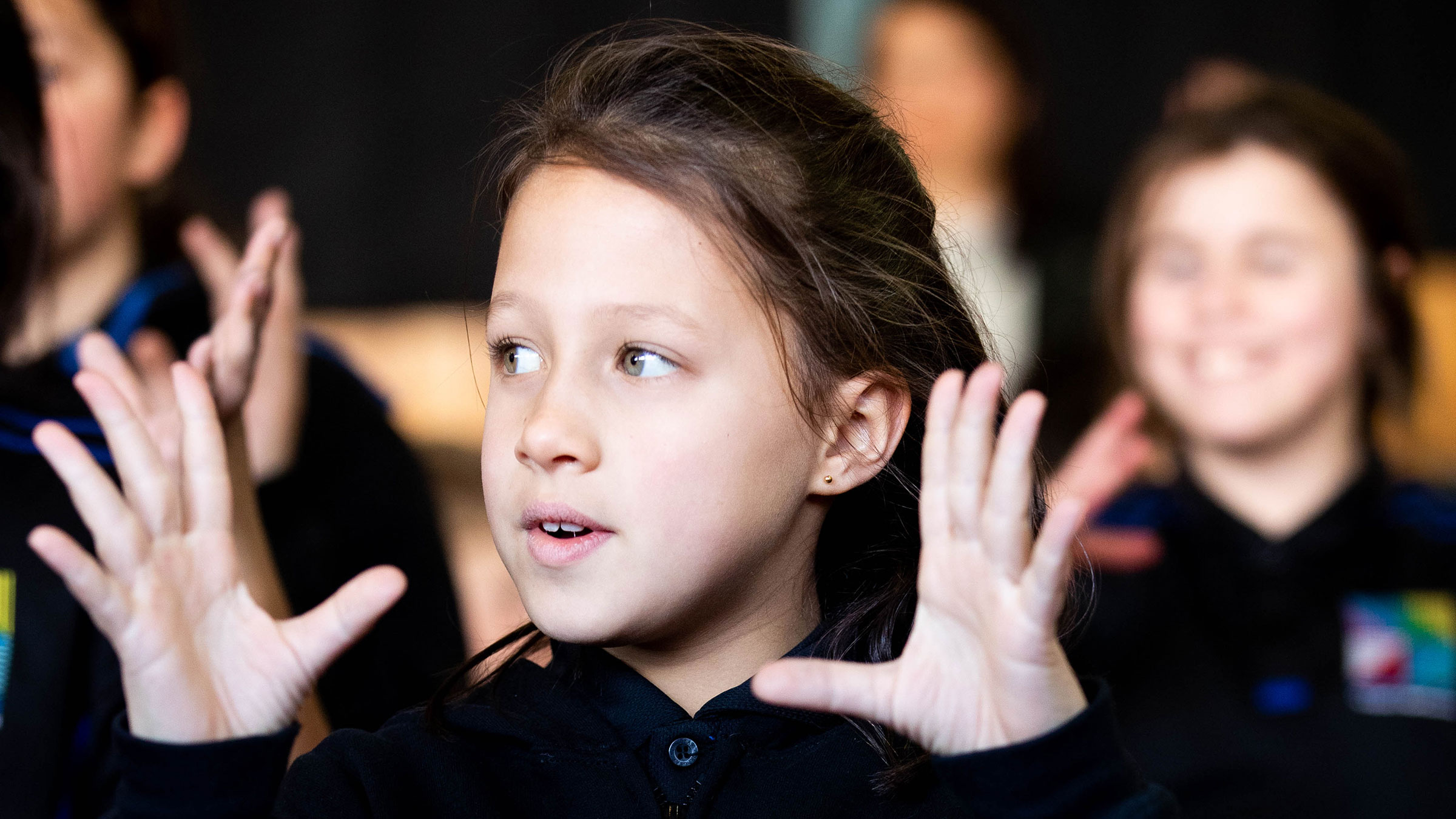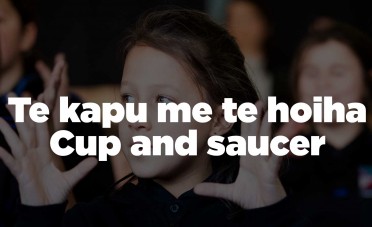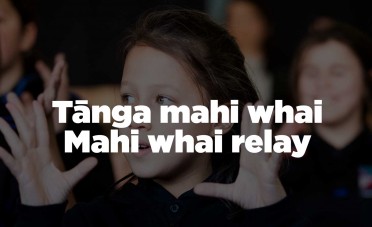Ngā heketau te tauira Parachute pattern
Use whai to create ngā heketau te tauira (parachute patterns).
Exploring te ao kori — Activity collections
This resource is part of a series within the Exploring te ao kori activity collections called Whai | String games.

Intended outcomes
Ākonga:
- participate in a range of whai and identify what made the experience enjoyable
- express their own feelings effectively and listen to those of other people while working with others on whai
- explore line and shape using manipulation techniques with string
- express ideas about their own and others' string figures
- identify the resemblance of the string figure to a parachute
- consider why people make string figures.
Suggested approach
Use a two metre length of cord knotted into a single loop (some games need shorter cords and some need longer ones). Harakeke string is customary, however nylon, braid, or wool can be used.
Talk with ākonga about string games and the way that lines can be used to make shapes, and that such lines can look like things ākonga will know and recognise. Talk about why Māori people made string figures and tell them that people from many different cultures throughout the world make string figures. Ask them why people make string figures.
Level 1
Demonstrate to ākonga how to make the pattern described below and ask them to try it:
- Put the string around both hands, hooked over the thumb and the little finger so it forms a rectangular loop.
- Number the fingers from one (closest to the thumb) to four (the little finger).
- Release the right-hand part of the loop and hold the left hand upright.
- Pull down the string that crosses from the thumb to finger four on the left hand.
- Release the string and go back to the new cross string and pull that down. Now the string has a little twist in it around the thumb and finger four.
- Put the right hand through the strings hanging down, take the twist of both sides from behind, and pull them both through the strings hanging down. You should now have a figure with four strings hanging down and a cross string underneath.
- Pass the four strings hanging down over the four fingers, putting fingers one, two, and three in the three spaces that lie between the four strings as they cross over to the back of the hand.
- Let the strings hang over the back of the hand.
- There should be a single string crossing the palm from the thumb to finger four. Gently pull that string downwards and your pattern will look like a parachute with one hold rope.
Level 2
Demonstrate to ākonga how to make the pattern described below and ask them to try it:
- Put the string around both hands, hooked over the thumb and the little finger so it forms a rectangular loop.
- Drop the right-hand part of the loop and hold the left hand upright.
- Take the cross string between the thumb and finger four and drag it over finger two.
- Put the right hand through the hanging strings, from behind, take the two strings on the palm and drag them down.
- This will be the same pattern as Parachute pattern 1 (see above), but the cross string will be in front instead of behind.
- Pass the four hanging strings over the four fingers, putting fingers one, two, and three in the three spaces between the four strings as they cross over to the back of the hand.
- Let the strings hang over the back of the hand.
- Take the two strings from the outside of the thumb and finger four and pull them down and your pattern will look like a parachute.
- Ākonga then describe how they felt when attempting this string pattern, and how they felt when their partner encouraged them. Discuss the ways they used lines to make shapes and how it reminds them of a parachute. They give reasons for people making string figures.


